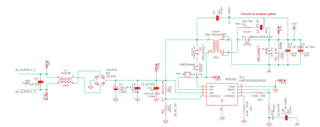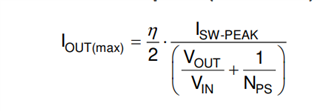Tool/software:
Hi TI Team,
I want to use LM5181-Q1 flyback converter to generate 5.1V output with a 220(mA) maximum load. The input could vary from 12V to 24V (AC-DC)
I have already used the device in an other project to create 13.1V output with 30(mA) and everything works fine; so I tried to use a similar circuit with the same transformer and adapting RFB to optmize the BOM stocked in my factory.
Attached you can see the trial schematic: the transformer used (750318737 Wurth) is present in the datasheet, It is suggested for (5.5 V to 16 V) output range and It has 1:1 ratio.
During the test I discovered that at 24V AC (which means about 33V on flyback Vin) If I increase the load over 100 mA the flyback goes in BCM mode; at 220 (mA) of load It reduces the frequency to more or less 200 (Khz) which reading the datasheet It seems to be the condition of maximum load of the device (figure 18). Attached you can see the Switching waveform in this condition.
Why does the converter seem to be at maximum load condition at 220 (mA) applied considering that the rated current declared on the datasheet is 0.5(A) with 5V output?
I also tried to apply 12V DC and what I found is that at my maximum load (220 mA) the frequency decreases to 120 (KHz).
In all the cases I have mentioned the output waveform is quite well (5.1V as desiderd) and I don't find temperature increase on the circuit.
Can I use the converter in these conditions without problems (I'm referring in particular to the case with 12V ,220 (mA) and 120(Khz) frequency)?
Why the flyback doesn't try to extend the duty cycle manteining the same frequency before lowering It? According to the datasheet the maximum duty cycle should be 0.6 .
Thanks for your support
Alessandro




